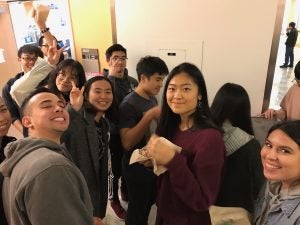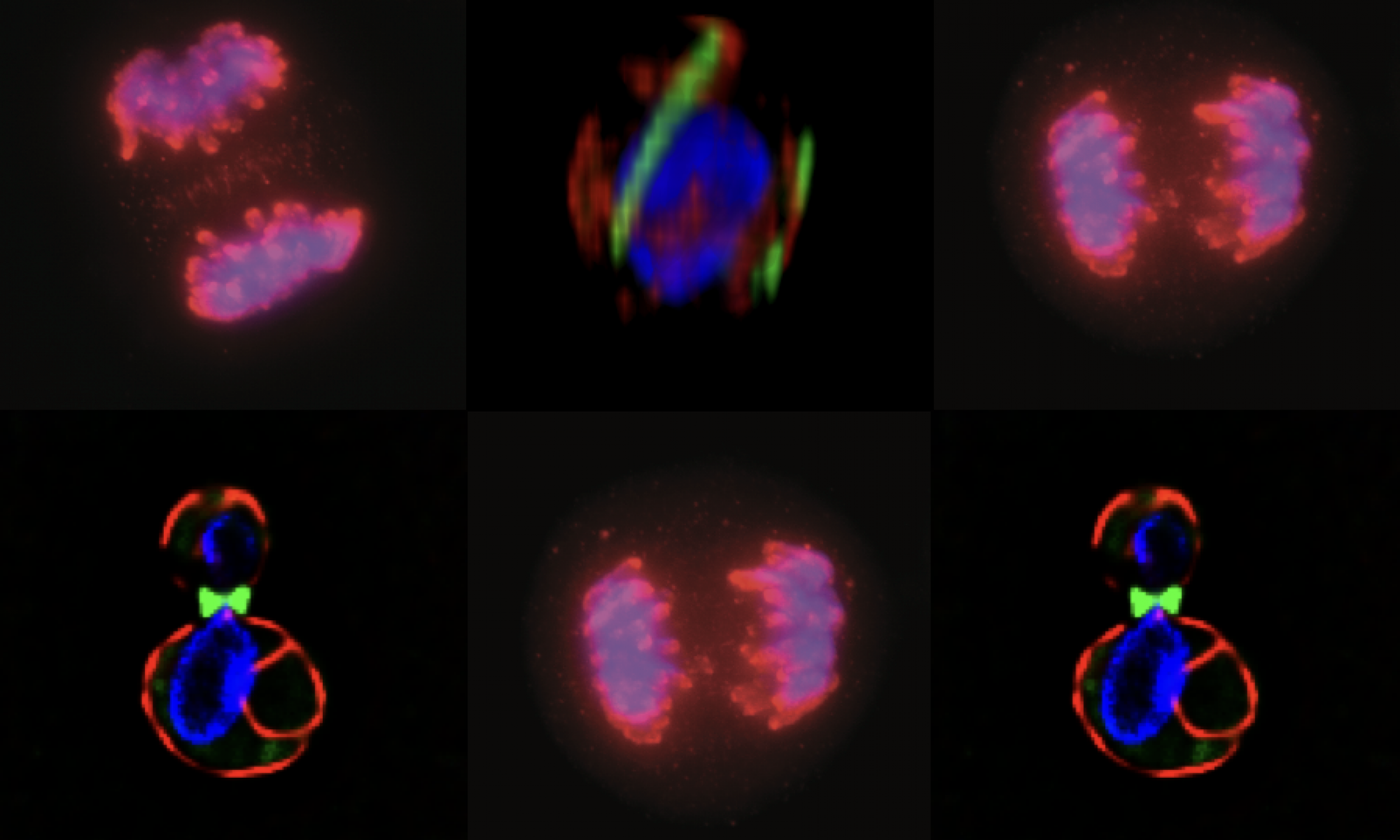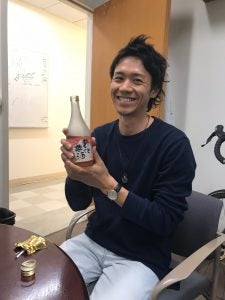In the advanced cell biology lab class for Cell Biology Majors in the College of Biological Sciences at UC Davis, students learn classic and advanced techniques used by cell biologists to understand how cellular machinery contributes to cell functions. This year students analyzed the behavior of septins under various nutrient conditions. Septins are a conserved cytoskeletal filament that interact closely with cell membranes, and they have been implicated in cell division, neuronal plasticity, cell signaling and targeting of intracellular pathogens to the lysosome for destruction. Despite their very interesting biology, septins are far less studied than their “famous” siblings in the cytoskeletal family – actin and microtubules.
After conducting yeast two hybrid studies on septin subunits and membrane proteins, the 140Lers below are taking a well deserved donut-break. Analyzing data uses lots of glucose!!



